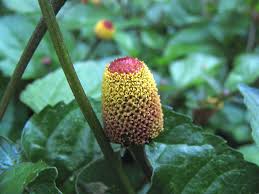
Breaking News
 They've Been Feeding You Poison (And Calling It Food)
They've Been Feeding You Poison (And Calling It Food)
 Tattoo ink may cause prolonged changes to the immune system
Tattoo ink may cause prolonged changes to the immune system
 Travel gadget promises to dry and iron your clothes – totally hands-free
Travel gadget promises to dry and iron your clothes – totally hands-free
 Duckweed: A sustainable, protein-packed food source smeared by Big Ag
Duckweed: A sustainable, protein-packed food source smeared by Big Ag
Top Tech News
 Perfect Aircrete, Kitchen Ingredients.
Perfect Aircrete, Kitchen Ingredients.
 Futuristic pixel-raising display lets you feel what's onscreen
Futuristic pixel-raising display lets you feel what's onscreen
 Cutting-Edge Facility Generates Pure Water and Hydrogen Fuel from Seawater for Mere Pennies
Cutting-Edge Facility Generates Pure Water and Hydrogen Fuel from Seawater for Mere Pennies
 This tiny dev board is packed with features for ambitious makers
This tiny dev board is packed with features for ambitious makers
 Scientists Discover Gel to Regrow Tooth Enamel
Scientists Discover Gel to Regrow Tooth Enamel
 Vitamin C and Dandelion Root Killing Cancer Cells -- as Former CDC Director Calls for COVID-19...
Vitamin C and Dandelion Root Killing Cancer Cells -- as Former CDC Director Calls for COVID-19...
 Galactic Brain: US firm plans space-based data centers, power grid to challenge China
Galactic Brain: US firm plans space-based data centers, power grid to challenge China
 A microbial cleanup for glyphosate just earned a patent. Here's why that matters
A microbial cleanup for glyphosate just earned a patent. Here's why that matters
 Japan Breaks Internet Speed Record with 5 Million Times Faster Data Transfer
Japan Breaks Internet Speed Record with 5 Million Times Faster Data Transfer
6 Plants Other Than Cannabis That are High in Healing Cannabinoids

Cannabis is not the only plant that contains medically beneficial cannabinoids, although it has driven the research to understand the powerful therapeutic properties of these plant compounds. In actuality, there are several plants that are also rich in cannabinoids and benefit the body's endocannabinoid system, which is responsible for helping the body maintain internal balance, or homeostasis, which is needed for attaining optimum health.
To expand our understanding of cannabinoids and the endocannabinoid system, scientists and botanists are exploring the prevalence of cannabinoids in many plants used in natural remedies, other than just cannabis. Below are six plants found to either contain healing cannabinoids or affect the endocannabinoid system, and some of their known therapeutic benefits.
1. Coneflower – Echinacea
This plant is well-known for its ability to help the body fight off the common cold. It is also used to relieve anxiety, fatigue, migraines, and arthritis. Echinacea is a bit different than cannabis because it uses cannabimimetics instead of cannabinoids to engage the endocannabinoid system, particularly the CB2 receptor. Similar to THC in cannabis, the N-alkyl amides (NAAs) in echinacea are responsible for regulating the immune system, pain and inflammation.
2. Electric Daisy – Acmella oleracea
Native to the Amazon region, the electric daisy is used to create a painkilling gel. It successfully blocks pain receptors at nerve endings, as per trials conducted by Cambridge University. The compounds found the the electric daisy are called N-Isobutylamides, and similarly to other connabinoid-like compounds they regulate pain and inflammation. This natural remedy is emerging as a dental remedy for ailments such as impacted wisdom teeth.
3. Helichrysum umbraculigerum
Native to South Africa, this daisy has a strong mood-stabilizing andanti-depressant affect due to a large amounts of cannabigerol (CBG), also found in the cannabis plant.
Helichrysum has been studied by Italian natural product chemist Giovanni Appendino. He presented at the International Cannabinoid Research Society his discovery that cannabinoid-like compounds are made by plants, starting from an aromatic acid, which is different from the normal cannabinoid biosynthtic route. Helichrysum is used in African ritual ceremonies to make fumes with a potential psychotropic effect similar to other cannabinoids.
4. Liverwort – Radula marginata
This plant, indigenous to New Zealand, contains large amounts of perrottetinenic acid, which is strikingly similar to THC, the psychoactive component in cannabis. It is believed to bind with the CB1 receptors, just as THC, although liverwort is not known to have any psychoactive effects. What it is known for is its ability to treat bronchitis, and historically it has been used to alleviate gallbladder, liver, and bladder problems.
5. Cacao – Theobroma cacao
The cacao plant has many therapeutic properties and it is known to be a powerful, and delicious superfood. Cacao affects with the endocannabinoid system by deactivating the enzyme called FAAH, which typically breaks down the endocannabinoid known as anandamide. Since anandamide is identified to be the body's natural version of THC, eating natural chocolate increases the amounts of anandamide in the brain because the FAAH enzyme is less active.
The result is similar to what many people experience when smoking cannabis – a general feeling of being relaxed and happy – although the result is nowhere near as potent as with THC. Researchers at the Neurosciences Institute of San Diego were able to back up the claims that chocolate does contain three compounds that act as healing cannabinoids

 Advanced Propulsion Resources Part 1 of 2
Advanced Propulsion Resources Part 1 of 2


